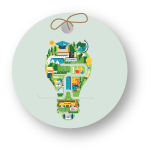The issue of biodiversity (conservation and development of wildlife) has received considerable and early attention in the UAE, reflected in the tremendous efforts made by the country and its significant achievements in this area, from enacting legislation and monitoring its implementation, establishing and expanding protected areas, to protecting, breeding and reintroducing endangered species into their natural habitats.
Considering that land and sea diversity is an integral part of the UAE's heritage, the Ministry of Climate Change and Environment continues to work, in collaboration with its partners, to strengthen efforts in this context through the implementation of a wide range of plans and initiatives in the framework of the National Biodiversity Strategy, the National Strategy to Combat Desertification and the Strategy for Sustainability of the Marine and Coastal Environment, among others.

 Nearby Happiness center
Nearby Happiness center  Converting PDF files to accessible HTML
Converting PDF files to accessible HTML Probelm Opening files?
Probelm Opening files? knowledge Center
knowledge Center MS Word, MS Excel,PDF Files
MS Word, MS Excel,PDF Files e-Services
e-Services Service Directory
Service Directory  Change Screen Resolution
Change Screen Resolution Find Information
Find Information